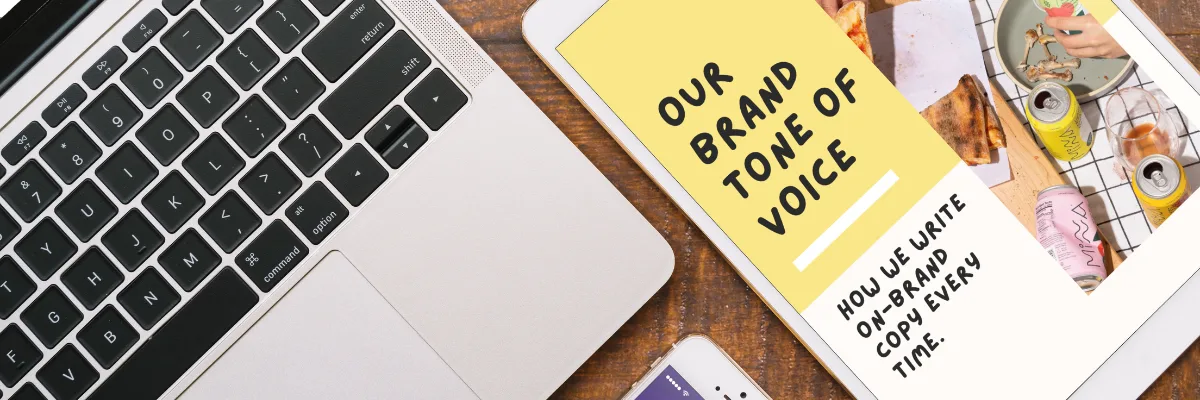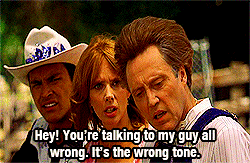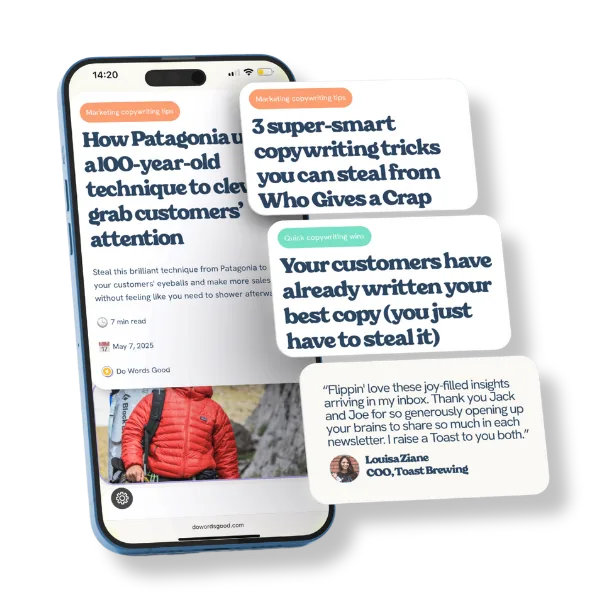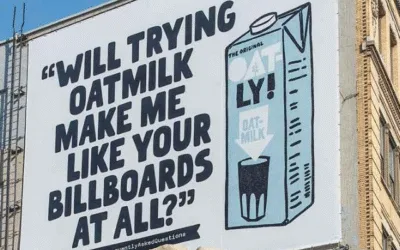Peachies beat Pampers by selling sleep, not nappies. Learn their Ladder of Why messaging trick to make your copy resonate.
77% of brands don’t use their voice consistently. Here’s how to keep yours on point.
Find out how you can create a brand voice document that's actually useful and helps you and your team write everything in the same voice.

Get pro copy tips, branding tricks and e-comm insights directly to your inbox every Tuesday.
Last week, we came across this crazy stat:
44% of copywriters say that rewriting copy for tone is the most time-consuming part of their job.
And from experience, one of the headaches we hear clients talk about again and again the first time we speak to them is the feeling that they aren’t showing up consistently with their voice.
Sometimes their copy feels like oh yes, this is who we are, but in other places it feels a bit flat, a bit off, a bit generic or like it doesn’t quite do the brand justice…
☝️ And if that feels familiar, you’re not alone. In fact, only 23% of brands say that they use their brand voice consistently.
So this week, we thought we’d break down some of the ways we document and train teams on brand voice to make sure everyone knows how to use it.
💡 This week’s big idea: Most brand voices aren’t inconsistent because your team aren’t doing words good.
They’re inconsistent because most brand voice guidelines are really difficult to use.
“Sustaining an audience is hard. It demands a consistency of thought, of purpose, and of action over a long period of time…”Bruce Springsteen
“… and really clear brand voice guidelines.”
Jack and Joe
In our experience, brand voice guidelines tend to be one of two extremes:
2 pages buried on page 65 of a wider brand identity PDF that says “Be friendly but professional”.
A 60-page PDF that breaks down the entire brand voice into 9 pillars, 3 archetypes and a house style… but with almost no instructions on how to use it.
Either way, the result is the same: brand voice confusion, drifting tones, constant rewrites…
When that happens, the problem isn’t that your team can’t write in your voice. It’s that your brand voice document doesn’t make it easy for them.
Even the sexiest, punchiest brand voice in the world is useless if it’s not used consistently.
We’ve been saying this for years. And now, finally, we have data to back this up:
👉 Brands that don’t enforce their guidelines grow 20% slower and make 33% less revenue than their on-brand peers.
👉 79% of consumers say they are more loyal to brands with consistent communication.
👉 Tone consistency alone explains 52% of whether someone will recommend your brand to a friend.
Because while customers love a brand with a big, bold voice, they love brands that show up authentically and consistently more.
And with AI turning almost every brand you see into this chatty, rule of three-loving AI beige voice, it’s never been more important to use your distinctive brand voice consistently so you stand out.
Why staying consistent matters almost as much as what you’re saying
There’s two parts to any brand voice project.
The first part is making sure the voice is bold, distinctive, stands out, is a true reflection of the brand… and all that good stuff. That’s the sexy bit where you get to be creative and do the deep work.
We absolutely 💛 this process. (And while we don’t have time to dig into that whole process today, this is a good starting point if you’re at that point in your journey.)
However, the final brand voice document (AKA, the thing people are going to actually use) is often an afterthought. They’re too long, over-written and not easy to use.
But making sure it’s easy for your team to implement your voice is the key to your voice being used consistently.
And consistency makes a huge difference 👇
👉 Consistency helps customers make decisions quicker
When your brand language, voice and verbal identity stay consistent, your customers don’t waste precious brainpower trying to figure out who you are, what you’re selling, if you’re right for them… they recognise you and understand it straight away.
In fact, the Nielsen Norman Group found that brands with a uniform tone reduce decision time by 20% and boost satisfaction by 38%.
In other words, the easier your copy is to recognise, the more trustworthy you feel and the more likely a customer is to buy and be happy they bought.
👉 Consistency builds affection through repetition.
Humans are wired to like what they recognise.
The mere-exposure effect means the more often we see something, the warmer we feel about it. A 2025 review in The Branding Journal found that being consistent in terms of look, feel and voice improved click-through rates by 9% and purchase intent by 15%.
All from showing up in the same way, again and again.
👉 Consistency makes your brand stick.
Think of your brand voice as a shortcut your audience can grab onto. When every touchpoint uses the same verbal style, you create a little mental hook they can grab in an instant.
That’s why your favourite brands feel familiar even before you spot their logo.
This schema-driven recall (sometimes called the “easy to known” loop) is what helps people pick you without overthinking.
👉 Consistency signals you’re worth trusting.
Customers are more likely to trust brands that have consistent communication styles and go from casual buyers into repeat customers, according to a 2020 study.
We see this in real life too. Imagine if Patagonia suddenly started speaking in Gen Z slang or Oatly did an Instagram caption that was very dry and corporate. It’d feel off, right? It’d trigger that slight delay that stops you from buying.
Our top 5 ways to keep your brand voice super consistent
As copywriters and brand voice strategists, we’ve seen, been sent and written our fair share of brand voice guides.
Fun fact: our approach to writing better brand voice documents was as direct response to some of the vague, impossible-to-use brand voice documents we’d been sent.
So we thought we’d apply some of the same psychological principles we apply to our copywriting to the way we write about copywriting for copywriters.

But here are the 5 non-negotiable parts of a brand voice guide (and training) that we never skip 👇
1: Limit your voice pillars to no more than 3
🧠 Lingo check: brand voice pillars are the personality traits that define your voice and act as guardrails, making sure your brand always “sounds” like you.
Imagine being told to write a social media caption in a voice that’s funny, creative, confident, opinionated, driven, empathetic, purpose-led, inclusive and witty. It’s impossible, right? Like, where do you even begin?
Now, we’ve seen some articles (and ChatGPT) suggest you can have up to 5 pillars… but in our experience even 5 elements can become super tricky to implement and balance.
(Funny, confident, opinionated, purpose-led and empathetic still isn’t that easy to put into words, is it?)

Basically, the more elements you’re throwing in the mix, the more likely you are to confuse the person writing the copy.
So we always stick to just 3 brand voice pillars.
But we also make sure those 3 things are zoomed in and specific, not broad and general.
So rather than funny, we’d say sarcastic, silly, irreverent… The more specific you get, the easier it is for someone else to pick up your guide and know exactly what to do.
Specific traits feel tangible, like you could point to a sentence and say, “yes, that’s it” or “nope, too far.”
Vague brand pillars leave things to the copywriter’s own understanding of that trait. (But more on that later.)
👋 Why this helps brand voice consistency
Cognitive Load Theory tells us that we can only juggle a few ideas in working memory at once.
By giving your team 3 clear, concrete pillars, it lowers the cognitive load and makes it easier to keep your brand voice top of mind while they’re writing.
2: Explain the thinking behind the voice
You know that study that shows that giving a reason for doing something (AKA, using the word because) increases people doing the thing by 93%?
Same thing applies here.
Rather than saying “Our voice is irreverent” say “Our voice is irreverent because our brand thinks a little differently from our competitors. Our irreverent voice has fun and is playful while other brands are blending in.”
Not only does giving a reason improve the chances your team will adopt your brand voice, but helping people understand why you’re writing like that helps them stay on-brand at all times.
👋 Why this helps brand voice consistency
Most brand guidelines rely on drilling home something called procedural knowledge.
That’s knowledge where there are set rules and guidelines for each situation. This pixel margin here, this brand mark there…
The problem is, brand voice doesn’t use procedural knowledge. It uses contextual knowledge because communication is inherently context-based.
Think of it like being able to cook a recipe vs being able to whip up a meal with whatever is in the fridge.
Sometimes, a situation is going to call for your brand voice to bend or adjust or be turned down a bit. (For example, collaborations with other brands, legal documents etc…)
In those moments, the writer that has procedural brand voice guidelines has two choices: to stick to a brand voice that isn’t quite right for the situation OR ditch your brand voice entirely.
However, if your team understands the why behind your voice, they’ll be able to find ways to adapt the voice so that it still feels like your brand (but maybe just a little more muted).
In other words, when people know the why, they can adapt the how. And that’s how your voice stays consistent, even when it has to change and adapt a little.
3 and 4: Use “This but not that” statements and Goldilocks examples
Once you’ve explained the why behind your voice, it’s time to dig into the how.
First of all, you want to define the point at which your brand voice goes too far and set some guardrails.
Because no matter how concrete you make your brand voice pillars, different writers can have completely different interpretations of how that should sound.
So, let’s say we want a brand voice that’s bold.
(That’s slightly too simple an adjective, but bear with us.)
Here are two bits of copy that are unmistakably bold 👇
“The coffee industry is broken. While other coffee brands might be OK undercutting the farmers that grow the beans, our 100% organic, regenerative beans restore soils, fight climate change and pay farmers a fair wage and shares in our company. Every cup is a stand against business as usual.”
“F*ck bland mornings. Our beans are roasted as dark as your ex’s soul, sustainably sourced and unapologetically badass. Sip it loud, sip it proud, and tell the world to go green or go the f*ck home.”
The thing is, with brand voice guidelines that just say “our voice is bold”, that second example would be 100% on-brand.

That’s why we make sure we describe the voice pillars in “this but not that” statements.
Our voice is bold but never aggressive.
Our voice is irreverent but never immature.
Our voice is driven but never arrogant.
Our voice is expert but never condescending…
… you get the picture.
Doing that creates a mental picture of your brand voice sweet spot in the writer’s mind. Suddenly, they’re armed with a tool to say “is this aggressive? I should tone it back?”
But that’s only half the job. After that, you want to double down with what we call the Goldilocks Examples.
Basically, you give 3 examples of your brand voice in action. One that doesn’t have enough voice, one that has too much and one that’s just right. Like this👇
Our voice is confident, but never arrogant.
Not confident enough: “We think you’ll like this.”
Arrogant: “Everyone agrees we’re the best.”
Just right: “Trusted by 5,000+ coffee lovers (and counting).”
👋 Why this helps brand voice consistency
Everyone naturally has different ideas of what adjectives like bold or friendly mean, so “this but not that” definitions show people the sweet spot without dialing it up too much.
Then, when you stack on examples—rather than just descriptions— you let people learn by seeing rather than being told.
And that’s all backed by research on how we learn and pick
things up 👇
Giving guidelines reduces cognitive load and helps people build mental models more efficiently than abstract rules alone
Observational learning shows that people are far more likely to replicate behaviors accurately when they see concrete examples in context
Once you start stacking these habits, you end up with a brand voice that lets your writers pick up the voice instinctively and gives them the tools to use it consistently.
5: Create department-specific cheat sheets and prompts
OK, without getting into too big of a topic here (we’re going to dig into it properly in a few weeks) but voice and tone are completely different beasts.
(One is who you are at your core, the other is situational. Think of it like talking to your mate vs talking to your grandma. Same person, but you adapt how you speak.)

Well, great brands do the same thing.
They have the same foundational voice, but they modulate it and flex it depending on the audience and the channel.
So, here’s a pro tip that we introduced a few years into helping brands with their voice: make cheat sheets for each department that shows them the Goldilocks examples of how to adapt the tone.
Because, let’s be honest, sending somebody in customer support a 30-page brand document isn’t going to lead to a consistent voice.
They’re busy, they have their own stuff to do and learning the brand voice often feels like a “marketing thing.”
But if you want your voice to show up consistently in your captions, DMs, out-of-stock emails, packaging inserts… everyone speaking to customers needs to feel like they’re singing the same tune.
(Innocent actually run voice training for every new joiner, whether they’re in marketing, finance, or ops. Love that.)
All it takes is a one or two-page cheat sheet that covers:
✅ A quick overview of how the brand talks (and why)
✅ A few “This, Not That” swaps
✅ Some Goldilocks examples to show the right level of tone for that context
✅ A short prompt they can paste into ChatGPT to help them draft in the right voice
Then, you’re not asking your team to spend hours learning the voice, but you’re giving them the tools to stay on-brand and check their words before they hit send.
👋 Quick clarification: the goal of a strong brand voice isn’t to turn every person on your team into a mono-tone robot churning out word-for-word identical copy. It’s about building a shared personality framework so that, whether it’s your CEO tweeting, your customer-support rep answering DMs, or your freelance copywriter scripting an ad, everything “feels” unmistakably like your brand. That way, you can make sure you’re being consistent without stifling the creativity, spark and the je ne sais quoi that your team bring to their roles.
👋 Pro tip: if you use ChatGPT, create department-specific prompts.
AI is great for helping small brands punch above their weight and be more productive. But a single prompt for all brand copy is how you end up with copy that feels a bit insincere and inauthentic.
Instead, create tailored prompts for each department or use case.
For example:
Customer support: A prompt along the lines of “Write this in a warm, reassuring tone that still feels on-brand for us. Prioritise clarity over cleverness.”
Social media: “Dial up the playfulness but keep it concise. Use first-person plural (‘we’), sprinkle in relevant emojis, and end with a friendly call to action.”
Product descriptions? “Keep it on-brand, but make sure we’re highlighting benefits first, then features. Use energetic, sensory language. Keep sentences short.”
When you do this, you’re effectively giving the AI a mini style guide on demand, so everyone gets output that feels on-brand, no matter what they’re creating.
Bonus move: after generating copy, ask ChatGPT to critique its own draft against your brand voice pillars. You’ll catch inconsistencies before they head out into the wild.
👋 If you’re noticing that your brand voice gets a bit wobbly and uneven in places, we’d love to help.
We’ll work with you to use tips like these (and more) to turn your brand voice documents into guidelines your team will actually use so that your voice is consistent across every channel, customer touch point, and even your internal Slack channels.
(And if you don’t have voice docs or a formalised voice yet, we can help with that too.)
Dive into more free tips and tricks 👇
How Starface use orthography to build a killer brand voice their customers love
The words you write matter. But so do your full stops, emojis and lowercase letters. Learn how to turn punctuation into a powerful part of your brand voice.
Why Oatly’s brand voice is so damn good (and how yours can be, too)
We dig into the three layers of brand voice (10,000ft, 1,000ft, ground level), show how Oatly nails each one and how you can do it for your own brand.
The weekly newsletter that takes your brand’s copy from “meh” to “hell f*cking yeah!”

Read every week by legends at brands like these













